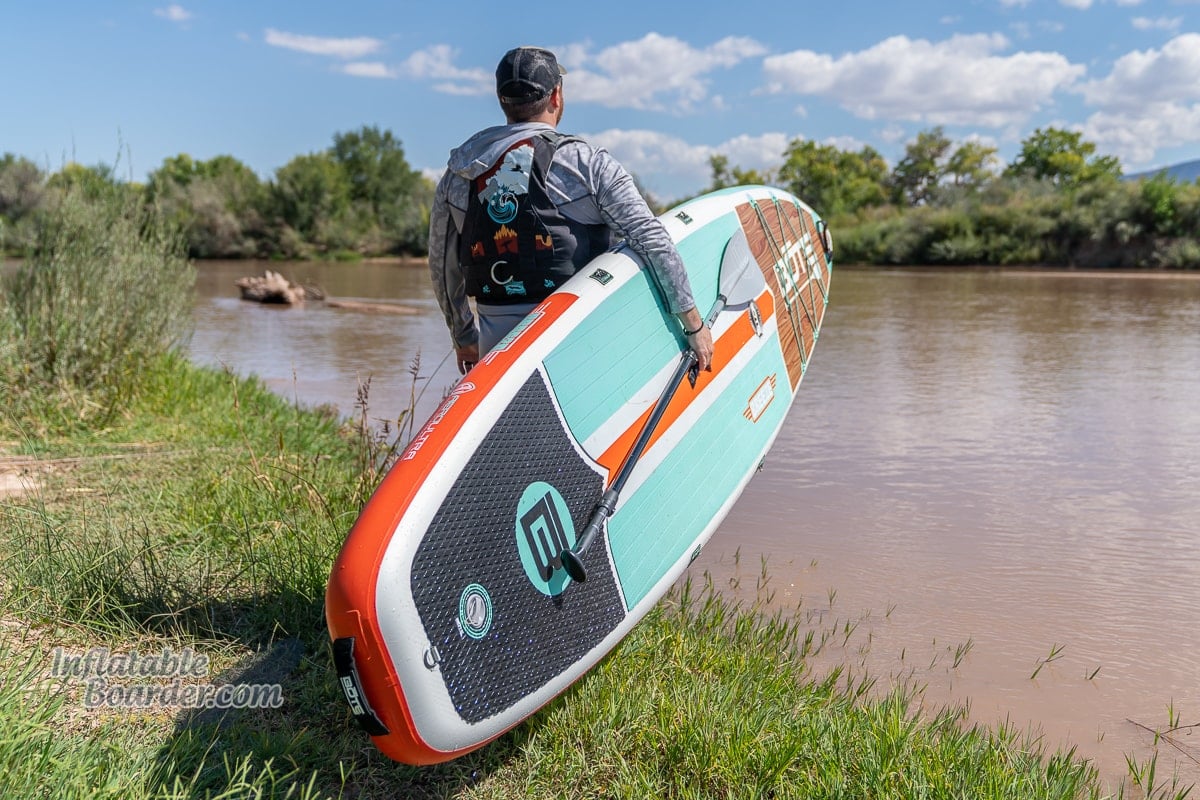
The Bote Breeze Aero 11’6” is a longer, cruiser-style iSUP that’s easy to paddle.
Bote Breeze Aero 11’6”: Overview
The Bote Breeze Aero will always hold a special place for me as it was the board that I really learned to SUP with. Back then it was a different board (with slightly different dimensions and shape) but the core of the Breeze was the same. The Breeze Aero is a cruiser-style iSUP that is designed for a wide range of paddlers. It’s available in both a 10’8” x 33” version and an 11’6” x 33” version, which I used for this review.
The Breeze Aero is a larger cruiser-style iSUP that’s great for beginners, paddling with smaller passengers/dogs, yoga, or just some leisurely paddling around the lake or bay.
— Bote Breeze Aero Summary Ratings and Review —
Bote Breeze Aero
-
Construction & Durability
-
Features and Versatility
-
Stability
-
Speed
-
Maneuverability
-
Tracking
Overall Score
The 11’6” Bote Breeze Aero is an affordable, larger, entry-level cruiser style iSUP.
Pros
- The wide tail and nose make the Breeze Aero feel very stable regardless of your exact position on the board.
- Bote AeroUltra construction keeps the Breeze Aero very lightweight
- “BVA” and diamond-groove deck pads are comfortable and grippy
- Kayak seat and Travel Link carry strap compatible
- 315 lb carrying capacity
- “Surf” style fin increases maneuverability
Cons
- The Breeze Aero does not include a leash
- AeroUltra single-layer PVC construction is durable, but flexes significantly more than Bote’s AeroBote double layer construction
Construction and Durability
The Bote Breeze Aero uses Bote’s AeroUltra iSUP single-layer construction to reduce weight and cost, but this also reduces stiffness and overall performance.
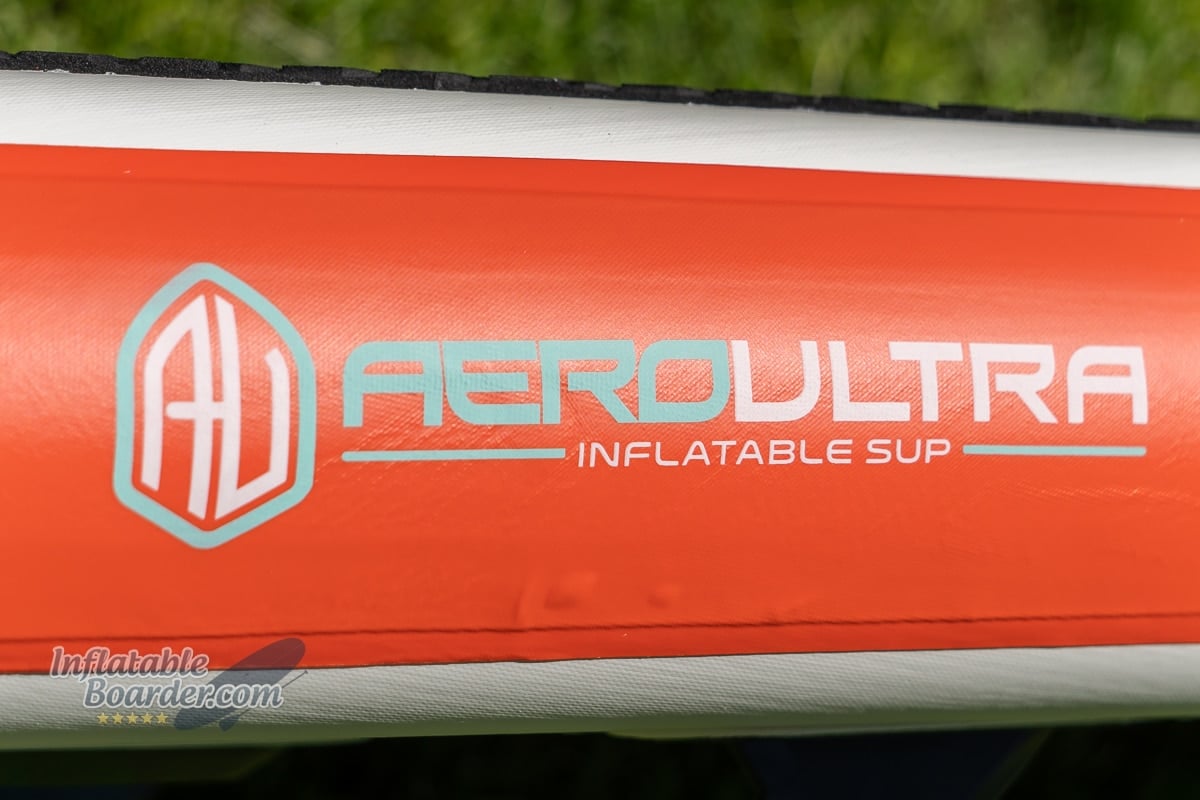
Bote AeroUltra construction uses a single layer PVC shell and heat-molded seams.
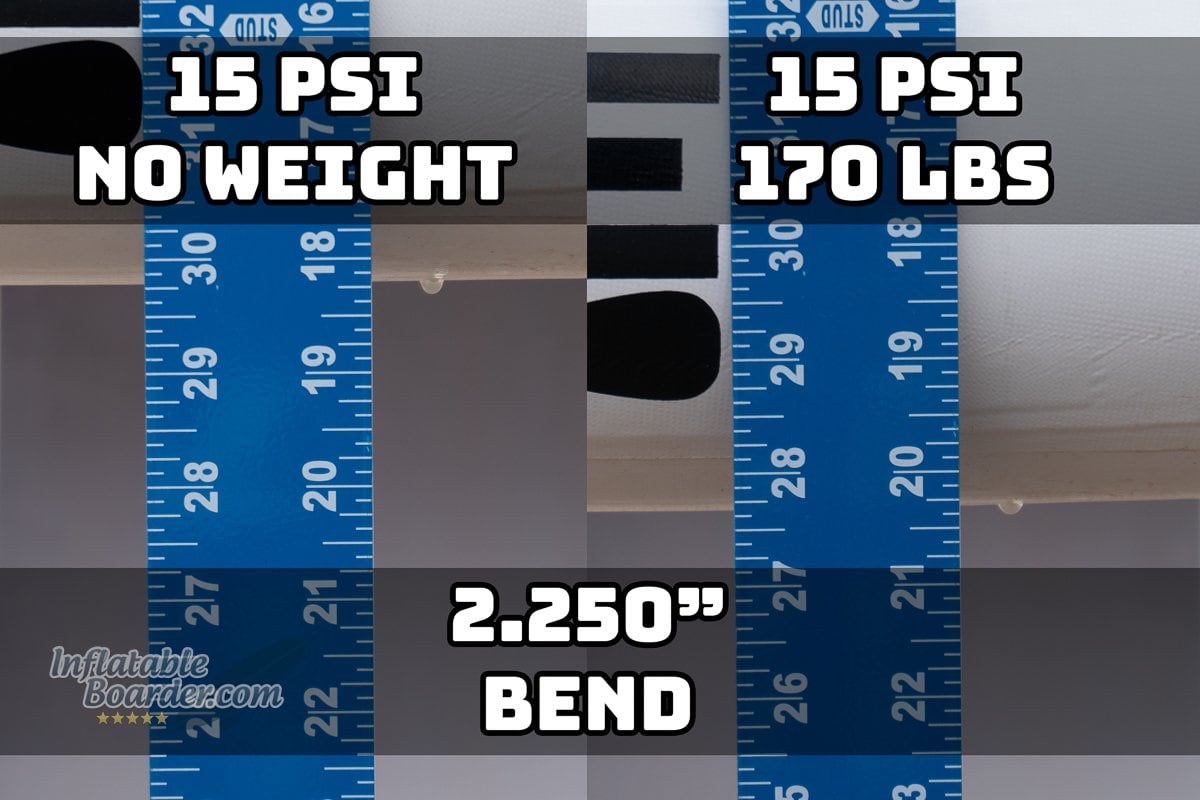
At the maximum 15 PSI, the Bote Breeze Aero bends 2.25” with 170lb.
Bote has two different types of construction for their inflatable paddleboards dubbed AeroBote and AeroUltra. The core (and only) difference between the two builds is the number of PVC layers used in the deck and hull (top and bottom). AeroUltra gets a single layer of PVC and AeroBote gets two layers of PVC.
In addition to the single layer of PVC for the deck and hull, the Breeze Aero gets two PVC rail layers around the sides of the board. The inner layer finishes the air-tight seal and the outer layer increases stiffness and durability. The inner layer is indicated by Bote to be “heat-pressed” which is not the same as “heat-welded.” Heat-pressing uses heat to activate the glue between the layers of PVC whereas welding physically fuses the two layers into a single piece of material. While the inner layer is called out by Bote to be heat-pressed, the outer layer is not.
Inside the Breeze Aero are thousands of synthetic fibers (called drop stitching) that link the top and bottom layers at a set distance apart (6”). These fibers keep the board flat when inflated, rather than blowing up into a hotdog shape.
While Bote claims that they use “the latest in composite drop stitch production,” this construction has been the go-to basic build in the industry for many years – and has since been developed with newer materials and methods many different times. Bote’s description of their technology relies heavily on reiterating marketing buzzwords rather than the uniqueness of their construction.
When looking at Bote’s lineup of inflatable paddleboards, the majority utilize the AeroBote build which provides significantly improved stiffness, durability and performance – except for the Breeze Aero and the Wulf. Now, the Breeze Aero was formerly Bote’s lowest budget option, but this year that has been replaced by the Wulf. Both use the same AeroUltra construction, and the Breeze Aero 10’8” and Wulf are nearly the same size and shape as well. However there is a significant price difference between the two. I’ll get more into that later.
As I mentioned in the intro, many years ago I learned how to paddleboard on a Bote Breeze Aero, and it was a great board to learn on. The Breeze Aero was also the first model that we carried when I started a paddleboard rental and tour business in 2017 – and several of those Breeze Aeros are still being used today (including one that is still in the rental fleet). While Bote’s technology may not be the most advanced, I certainly can’t fault its durability – even from a commercial use perspective.
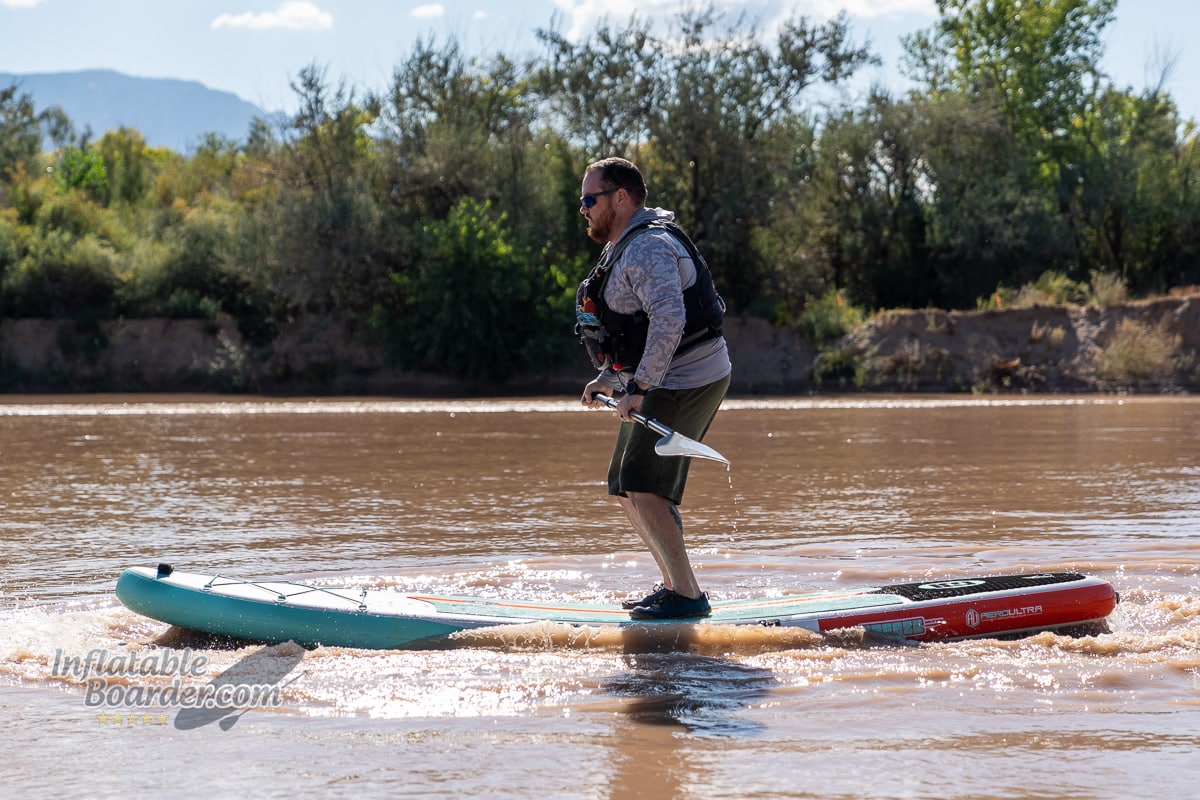
The Breeze Aero does have a significant amount of flex while using the board.
Specifications
| Dimensions | |
| Length | 11’ 6” |
| Width | 33“ |
| Thickness | 6“ |
| Weight | |
| Max Capacity | 315 pounds |
| Board Weight | 22 pounds |
| Kit Weight (SUP & accessories) | 28 pounds |
| Buying Info | |
| List Price | $799.00 |
| Warranty | 2 years |
| Returns period | 30 days |
Features, Accessories and Versatility
The Bote Breeze Aero is built more as a cruiser-style iSUP than a true all-around paddleboard. There are plenty of amenities for a great time on the water, but it is a little limiting in its overall versatility.
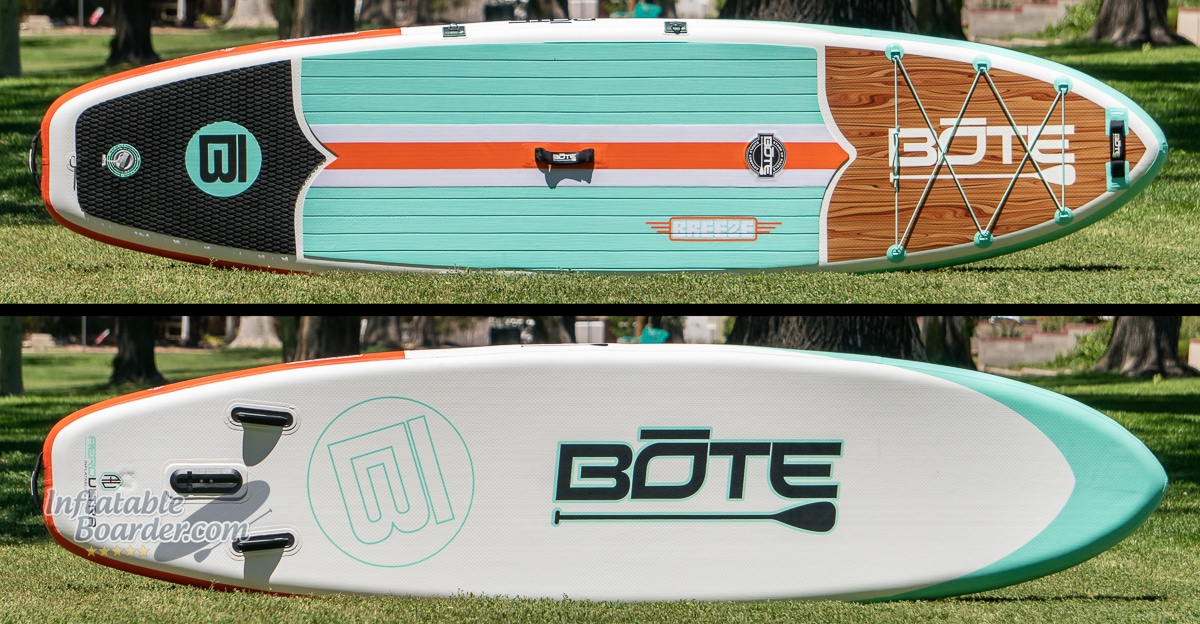
The Bote Breeze Aero 11’6” is 11’6” long, 33” wide, 6” thick and has a carrying capacity of 315lb.
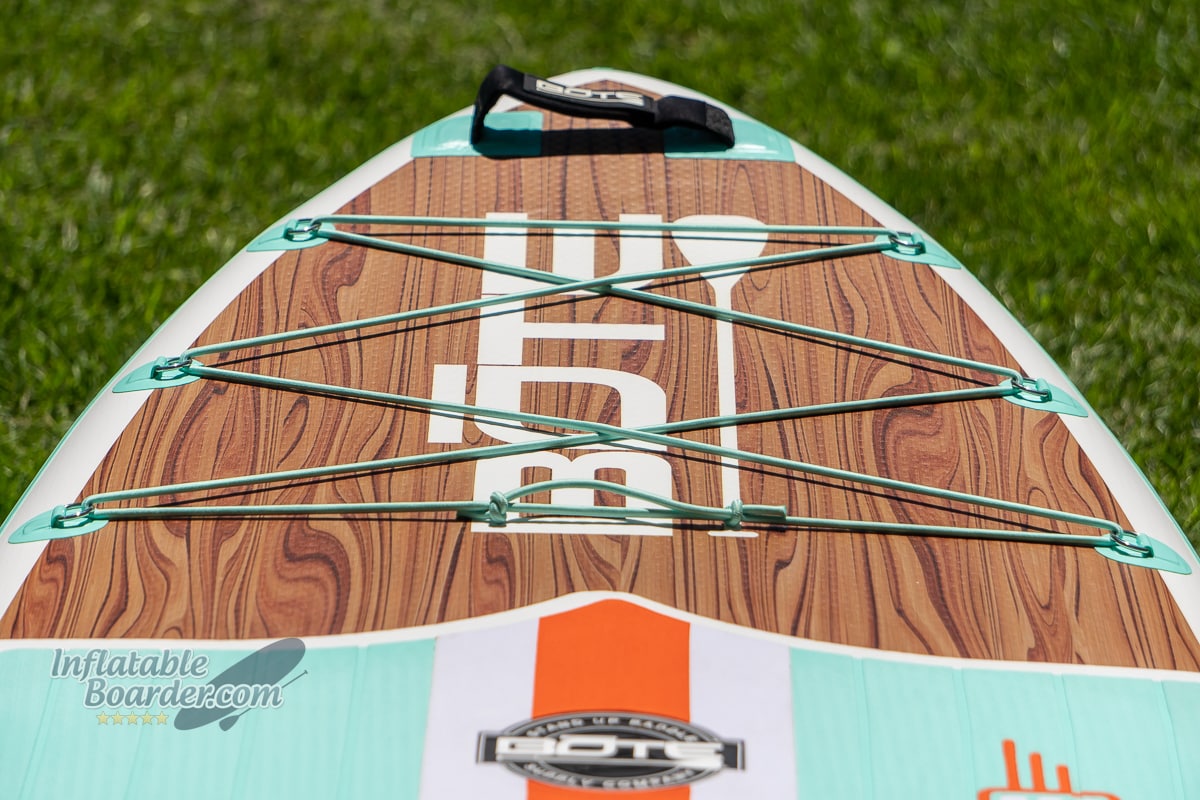
The nose of the board has a padded carrying handle and extra-large 6-point cargo bungee with limited adjustability.
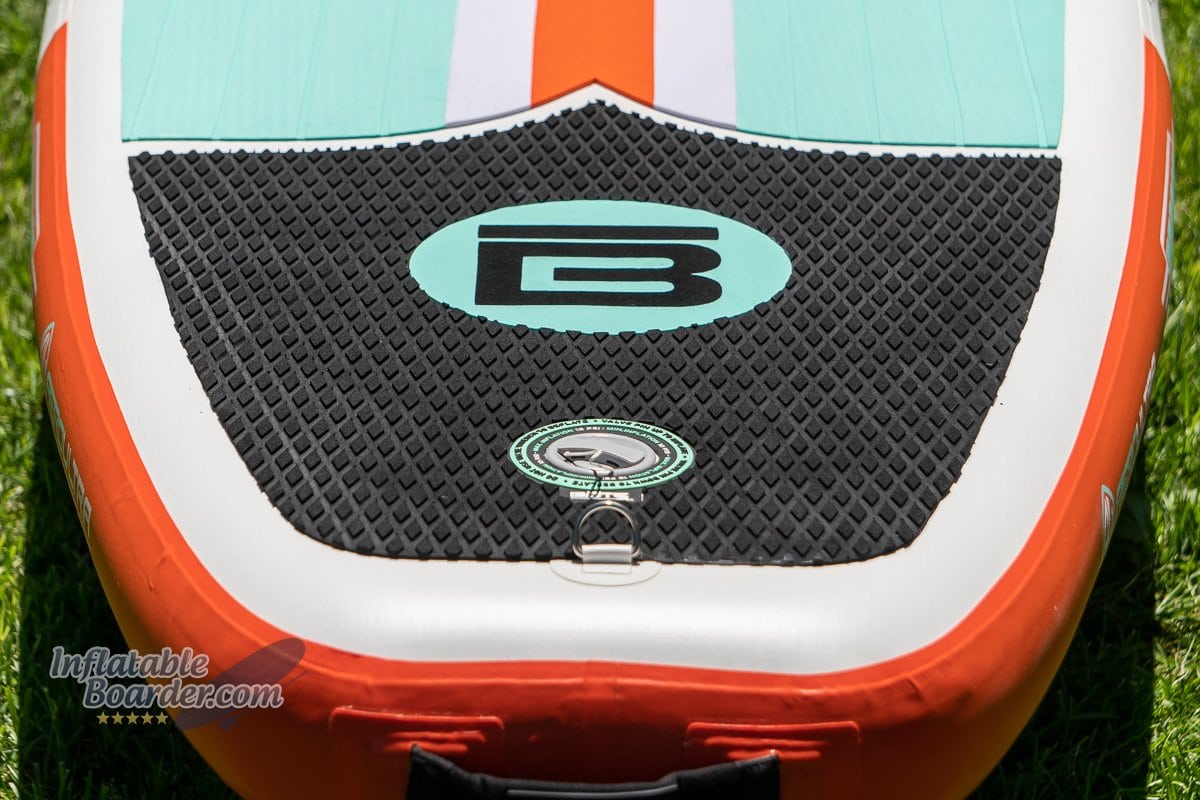
Tail of the board has a padded carry handle, leash d-ring, inflation valve, and textured deck pad.
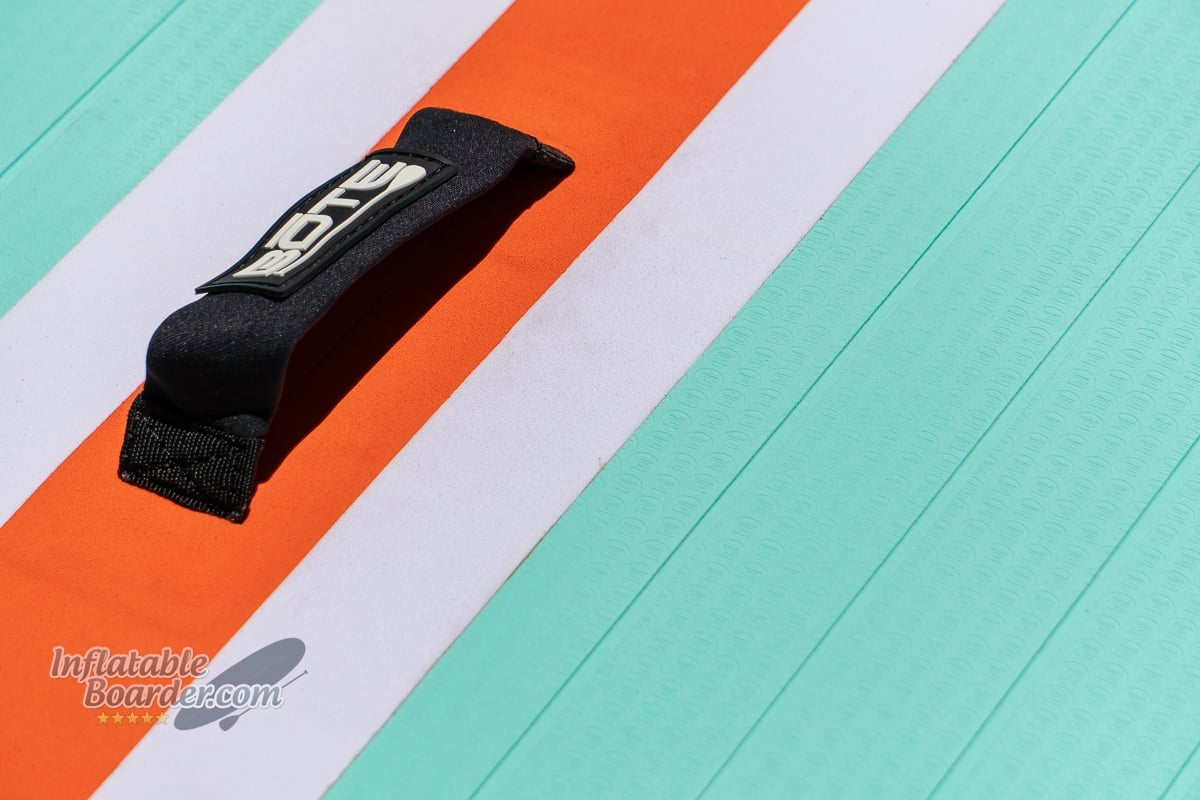
The main deck pad is Bote’s “BVA” logo-embossed EVA foam for comfort and control.
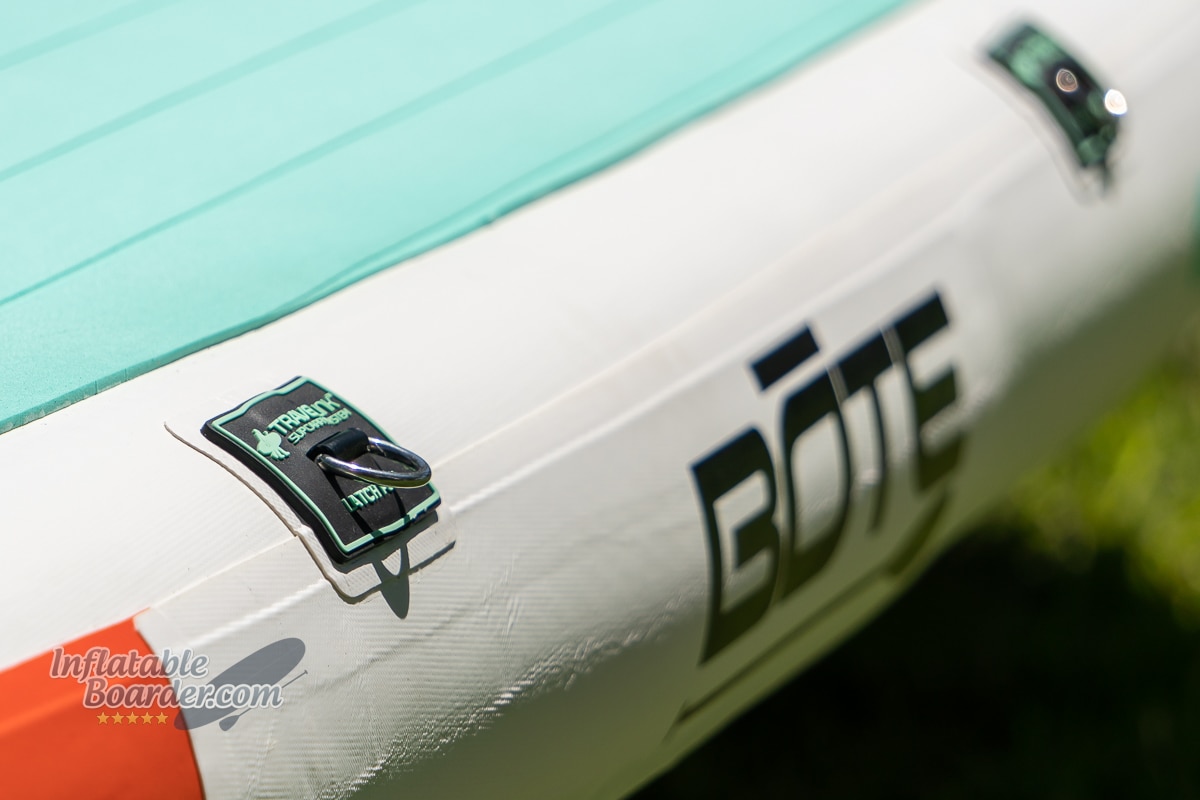
Four d-rings around the middle of the board are compatible with Bote’s inflatable kayak seat and their Travel Link shoulder strap.
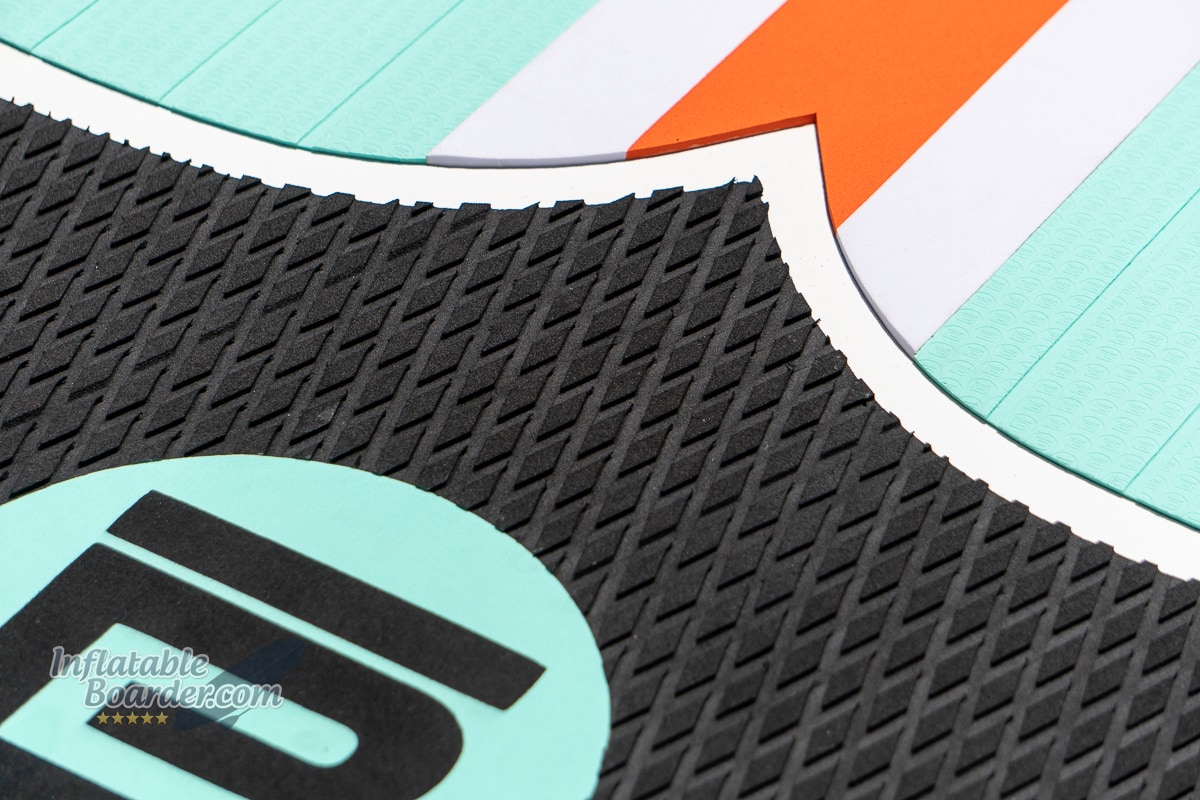
The deck pad transitions (with a small gap) at the tail of the board to a diamond-groove texture for improved traction.
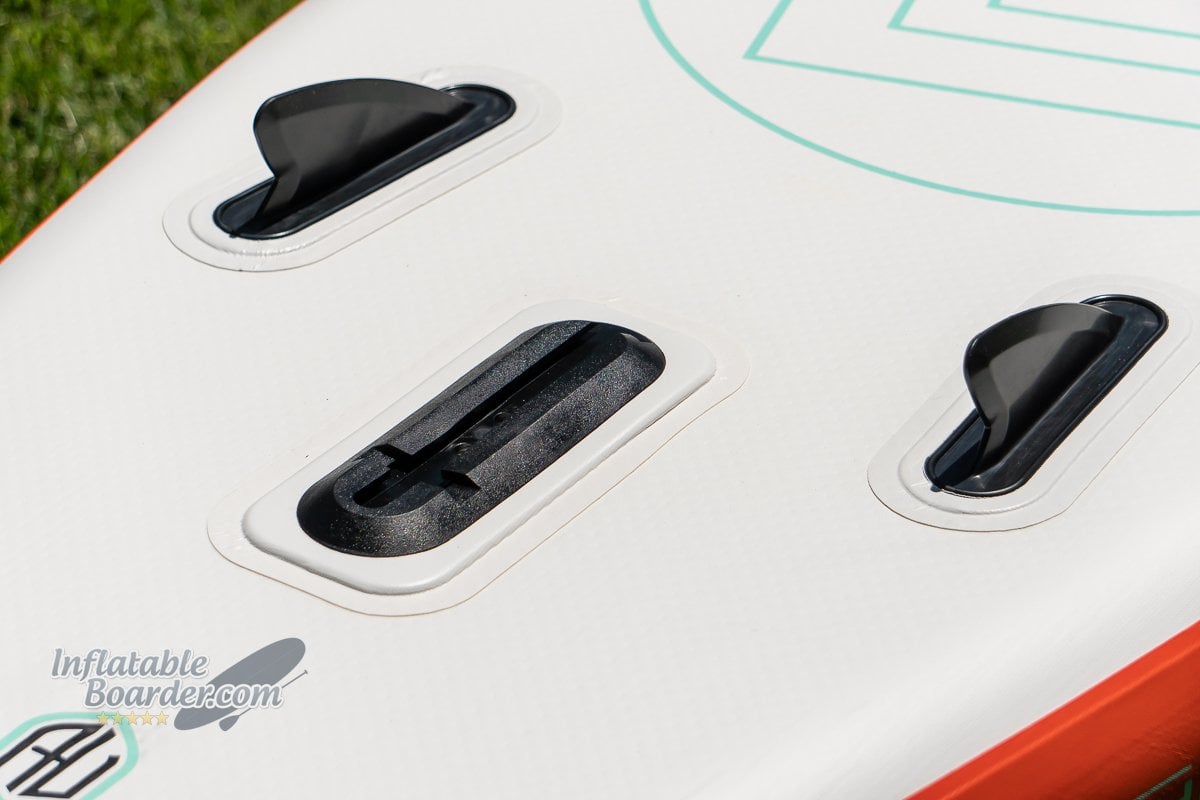
The Breeze Aero has two, very small, fixed fins and a slide-in fin box.
All-around and Cruiser-style iSUPs typically have a lot more in common than not, and often the biggest difference comes down to the designers’ intentions. There’s no hard line between the two style paddleboards, but I generally think of all-around iSUPs as trying to maximize versatility, while cruisers tend to maximize comfort and space. It’s sort of like the difference between a commuter bike and a beach cruiser bicycle. The Bote Breeze Aero definitely falls more into the cruiser category than the all-around category in this regard.
For a more all-around inflatable paddleboard from Bote, I’d look at the Flood Aero.
The Breeze Aero itself has two main features: A large cargo area on the front of the board and a large deck pad that covers about ¾ of the deck. The cargo bungee is strung between six d-rings that are placed way out on the edges of the deck to maximize the size of the cargo area. The cord does come tied with a fisherman’s knot which allows you to tighten and loosen the bungee cord simply by pulling the knot’s two parts apart or together.
The large deck pad is made of Bote’s “BVA” foam – which is standard EVA foam that is stamped with the Bote “B” logo to greatly increase traction compared to flat, brushed, EVA foam. The large, open, deck pad provides lots of room for standing in various areas, sitting, laying down, doing yoga, bringing a dog or passenger, or combining with the Bote inflatable kayak seat.
Farther back the deck pad has a decorative split toward the rear and changes to a diamond-groove pattern over the tail of the board. This deeper texture provides even better grip when standing on the tail, and gives you tactile feedback as to how far back you are on the board without needing to look down.
Around the middle of the board there are four d-rings that are placed to anchor the optional inflatable kayak seat, and they can also be used with Bote’s Travel Link shoulder strap to make the Breeze Aero even easier to carry once inflated.
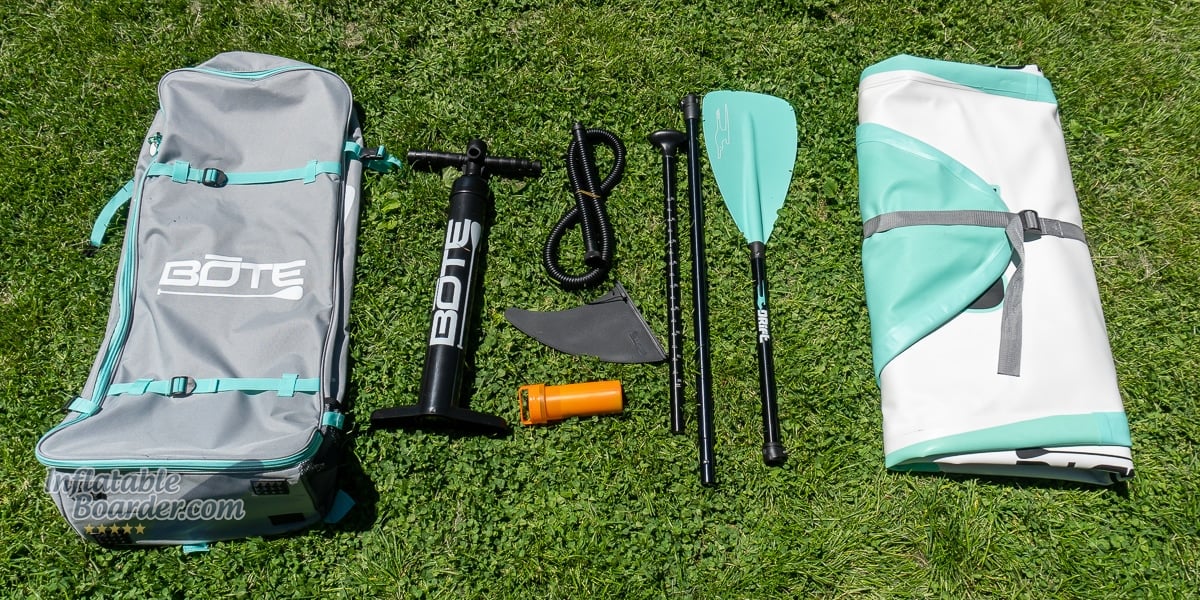
The Breeze Aero comes as a nearly complete kit, but does not include a leash.
The Breeze Aero is available in two different sizes. Both are 33” wide and 6” thick, however one is 10’8” and the other is 11’6”. The 10’8” version is incredibly similar to the Wulf – Bote’s newest inflatable paddleboard – which is also made with Bote’s AeroUltra construction. The Wulf is 4” shorter, but 1” wider than the 10’8” Breeze Aero. These two paddleboards behave very similarly on the water, with the Wulf gaining just a little bit of stability. However the biggest difference is the accessories. The Wulf gets an aluminum/nylon paddle, a large surface area fin, and a coiled leash, where the Breeze Aero gets a fiberglass/nylon paddle, a medium-sized “surf” style fin, and no leash at all. While the kits are relatively similar, their retail prices are not, with the Breeze Aero 10’8” being about 30% more expensive than the Wulf for nearly the same board, but with a slightly upgraded paddle.
The 11’6” Breeze Aero, on the other hand, adds over a foot of length over the Wulf (increasing speed and stability) and gains an extra 65lb of carrying capacity thanks to the extra volume. With the addition of the Wulf to the Bote lineup, I wouldn’t be surprised if we see Bote shift the Breeze Aero back to a single, longer, size like the current 11’6”x 33” version we have today.
Lastly I do need to mention that the Breeze Aero, while it does have a leash d-ring, does not come with a leash in the kit. Bote has claimed this is to provide their customers with the option to choose whichever leash they want. However, with an entry level board like the Breeze Aero, I see this more as a giant oversight in paddler safety as many new paddlers may not understand the importance of a leash or that they even need one at all. So please, for your safety, make sure to include the cost of a leash (and PFD) within your budget when purchasing the Breeze Aero or any other paddleboard that does not include a leash.
Paddle
The Breeze Aero kit includes a fiberglass and nylon hybrid 3-piece paddle. The fiberglass shaft reduces weight and increases comfort compared to an aluminum paddle.
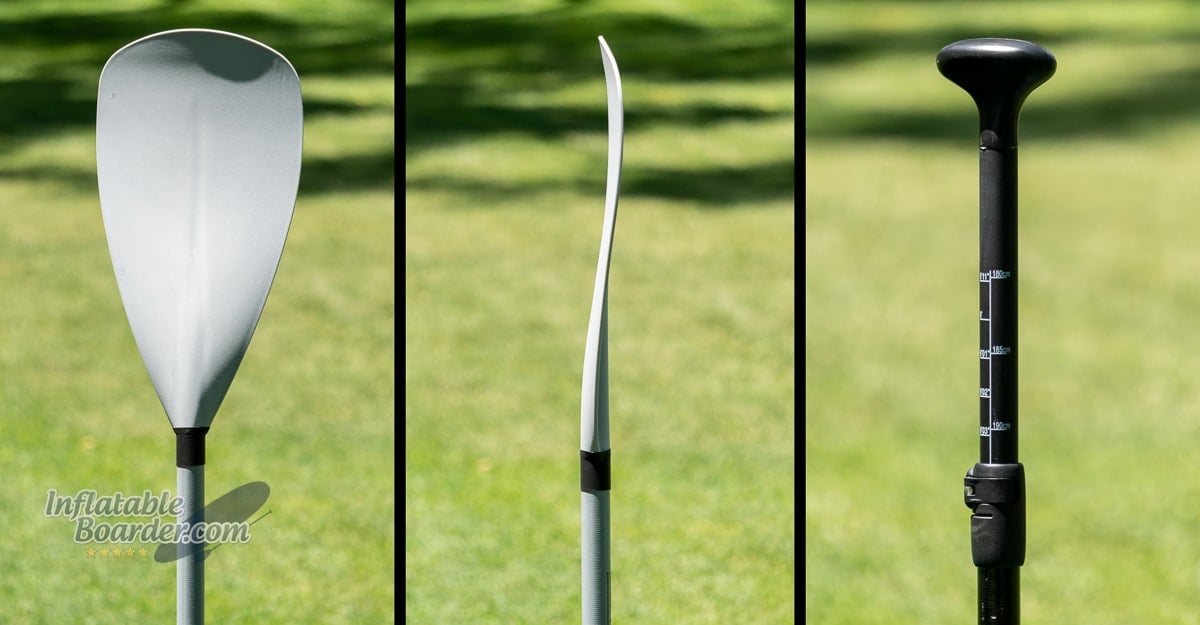
The Bote fiberglass/nylon paddle is easy and comfortable to use.
The three-piece nylon/hybrid paddle included with the Bote Breeze Aero is a good starter stick that matches well with the Breeze. The large, teardrop blade has a slight but noticeable curve that helps indicate which way to use the paddle. The blade is made of nylon, so it also has a good deal of abrasion and impact resistance, and just a bit of flex as it holds in the water.
The paddle shaft is made of fiberglass, which is a nice upgrade from aluminum paddles and a great compromise on performance and cost compared to carbon fiber. The fiberglass shaft also has a noticeable amount of flex while paddling. Flexible paddle blades and shafts are more comfortable to use over time than stiffer options (like aluminum) and reduce fatigue on your muscles and joints.
The handle section is also fiberglass, but with a hollow plastic palm grip. These plastic grips feel a little soft to me, but I have yet to see one fail (even in some pretty extreme heat). There is a length scale printed on the handle section, but no indexing/anti-twist groove to help align the paddle handle and blade.
Overall the Bote three-piece fiberglass paddle is a solid, workhorse paddle that isn’t too heavy or too small, and will work well for the vast majority of paddlers. Bote does have higher-end carbon fiber paddles available for purchase, but does not offer any bundling discounts when purchased with a board.
Stability
Cruiser iSUPs are made for leisure paddling – having fun on the water without needing to stress or constantly fight to stay upright. The Breeze Aero brings that vibe to the water with an easy-balancing board.
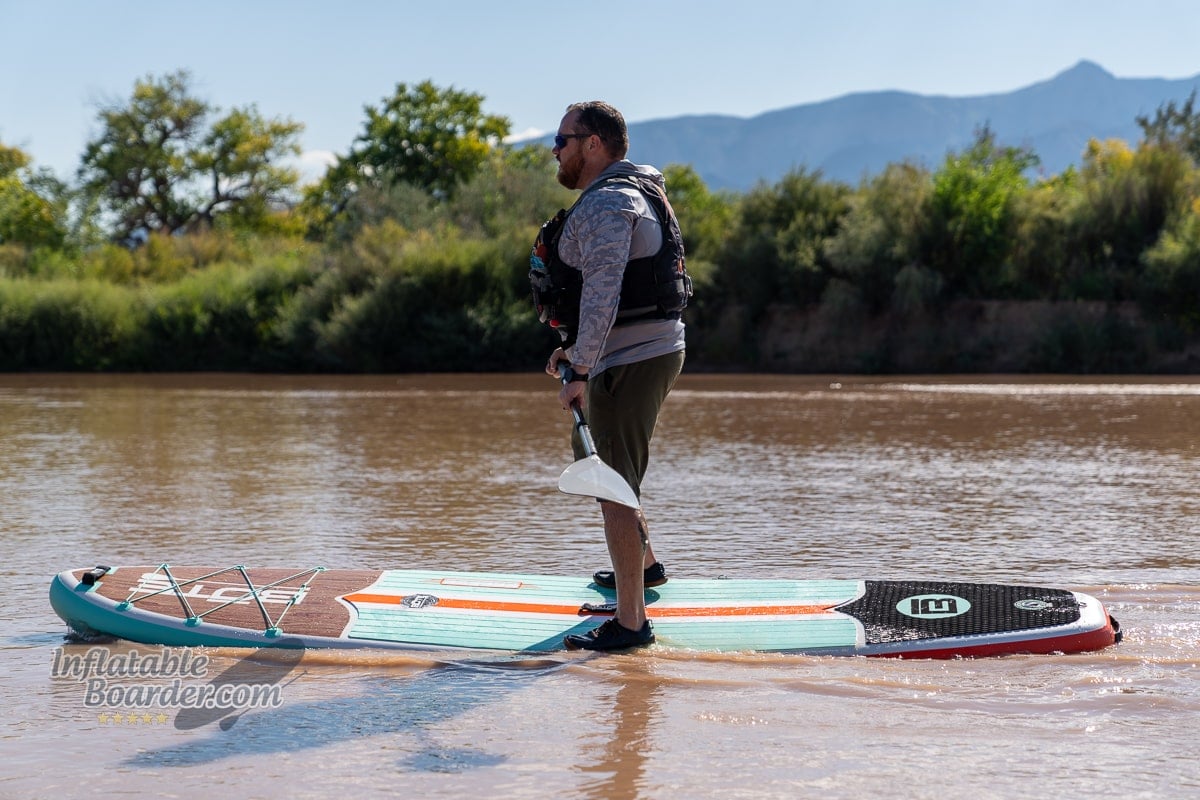
The Breeze Aero is stable on its edges as well as flat on the water.
Paddleboard stability is a culmination of different factors. The easiest to look at are the width, length, and shape. At 33” wide, the Breeze Aero has plenty of room side-to-side. You can easily stand with your feet under your hips and not be near the edge of the board (where a wide stance can actually make it easier to tip the board over). At 11’6” long most paddlers won’t feel like the board is under-sized and shifting forward and backward with any movement. Lastly, the Breeze Aero has a wide tail and wide nose. This gives it a more rectangular shape and maintains its stability even if you move forward or back on the board to accommodate a dog, passenger, cooler, or just want to move around.
Where the Breeze Aero could use some improvement in its stability is in its construction. Stiffer paddleboards feel more solid under-foot and thus feel more stable. The single layer PVC AeroUltra construction leaves us with a significant amount of flex in the board, and it is noticeable when paddling and very noticeable when moving around on the board. If you plan on paddling with lots of cargo or passengers, or are nearing the weight limit of the Breeze, I would recommend looking at some other offerings from Bote that use the AeroBote construction (like the HD Aero and Flood Aero) for a stiffer, more comfortable board.
Even with the softer feel, the Breeze Aero is still a pleasantly stable paddleboard that’s great for beginners, doing yoga, or just cruising around the bay.
Speed
Cruisers aren’t sprinters and with a focus on leisure paddling the Breeze Aero isn’t going to win many races, and that’s OK. The Breeze can still get a little bit of the pep in its paddle and cruises well, though.
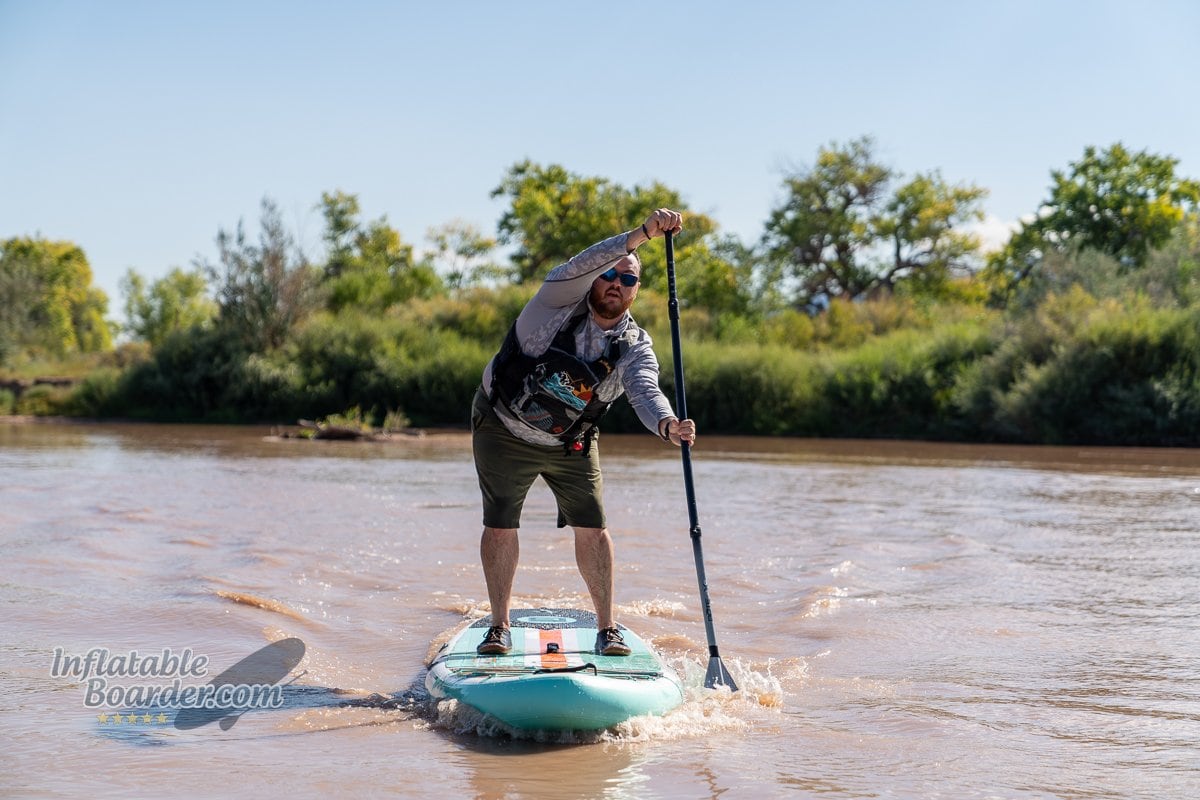
Sprinting is not the forte of the Breeze Aero.
Between the wide, boxy outline and the less-stiff construction it’s no surprise that the Breeze Aero isn’t the fastest paddleboard on the water. But that’s completely OK in my book – it’s a cruiser after all!
Bringing the Breeze Aero up to its maximum speed is a relatively easy task, but maintaining it is another matter. The lower rocker profile and wide nose push a lot of water in front of the board as you pick up speed. I didn’t have any issues with the nose diving or water over-topping (in flat conditions) but I could feel the resistance increase significantly as I tried to speed up to a sprint. The single layer construction also flexed significantly under powerful paddling causing it to bend down into the water and turn noticeably while sprinting.
On the other hand, the Breeze did much better cruising and gliding than sprinting. Paddling with a casual pace was smooth and easy to maintain. The Breeze Aero completed our ¼ mile cruise in about 4.5 minutes and was gliding about 1.5 board-lengths per stroke. This is very typical for cruiser and all-around iSUP speed performance.
Overall, the Breeze Aero is very pleasant to paddle when using it for the style of paddling it was designed for, and its cruising speed and glide are right where they should be for such a board.
Maneuverability and Tracking
The Breeze Aero performed just above average for both maneuverability and tracking in our testing.
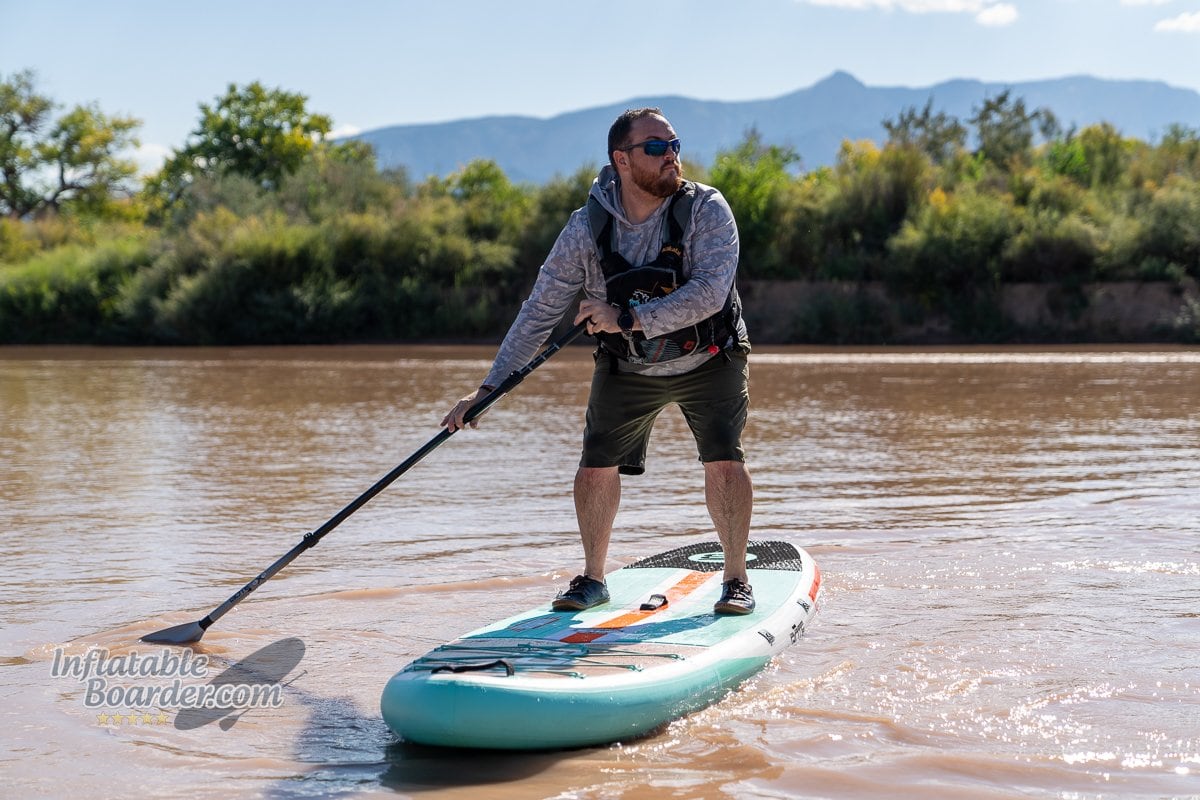
Turning the Breeze is easier compared to other Bote iSUPs partially because of the fin shape.
Maneuvering and turning your board is the first thing I teach when instructing new paddlers. It’s a little counterintuitive at first, but is critically important to be able to point your board where you want (or need) to go. Turning the Breeze Aero with simple forward sweep strokes is quite easy. Because of its lower nose rocker I was expecting it to be a little more difficult to turn, but instead two other factors helped swing the breeze in a full circle in just 5 strokes.
The Breeze’s moderate flex actually helps lift the nose and tail just a little bit, effectively shortening its length. While this isn’t a great thing when talking about speed or tracking, it does help turn the board faster. Additionally, the Breeze comes with a more-standard shaped “surf” or “flex” fin compared to the very high surface area fin that is included with the Wulf, HD Aero, and Flood Aero. This smaller fin – well, really it’s more of an average-sized fin for most iSUPs – also helps keeps the Breeze on the more maneuverable side of things.
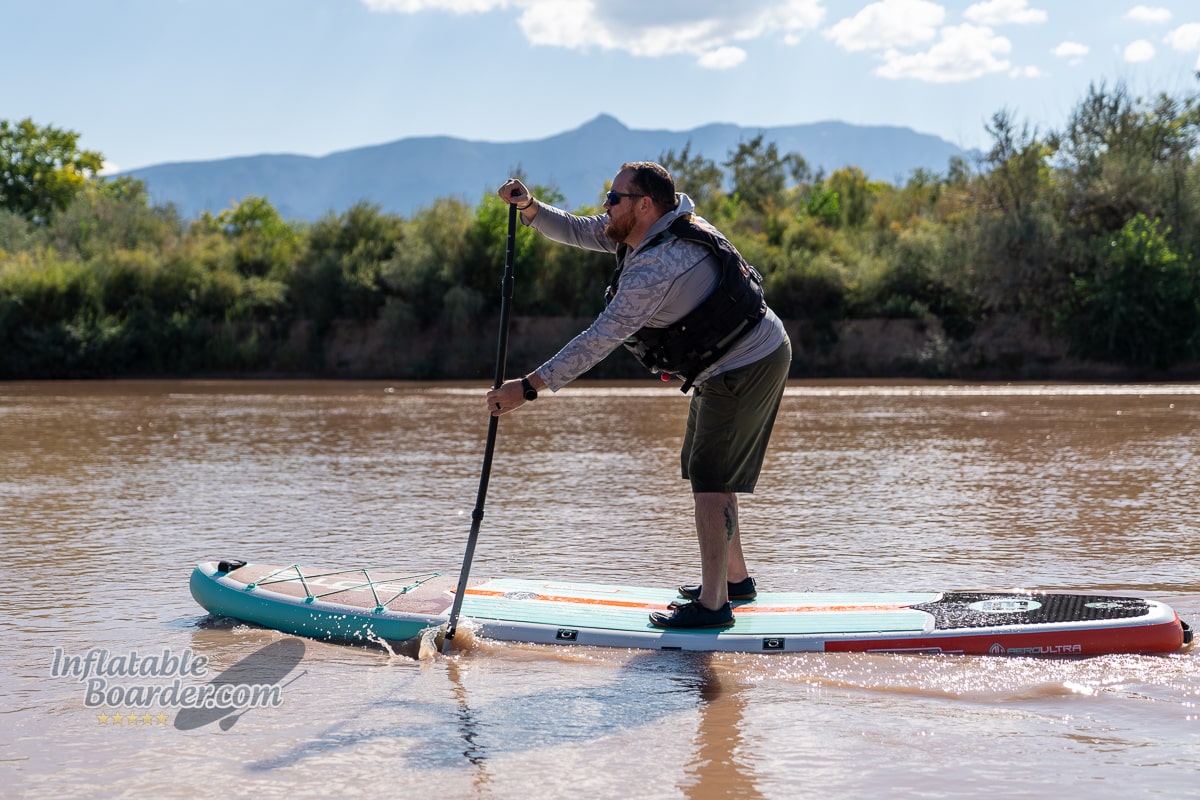
The Breeze Aero’s tracking performance was average for all-around and cruiser-style isups.
While the moderate flex and the surf-style fin shape help keep the Breeze Aero nimble on the water, they do detract a little from the straight-line tracking performance.
Even with these factors working against the Breeze, though, the tracking performance was still right on average with many other all-around and cruiser-style iSUPs. During our 10-stroke tracking test, the Breeze Aero only deviated an average of 15° from its original course. Most paddlers tend to change sides around every five strokes so this drifting won’t make a very large difference, especially over shorter distances.
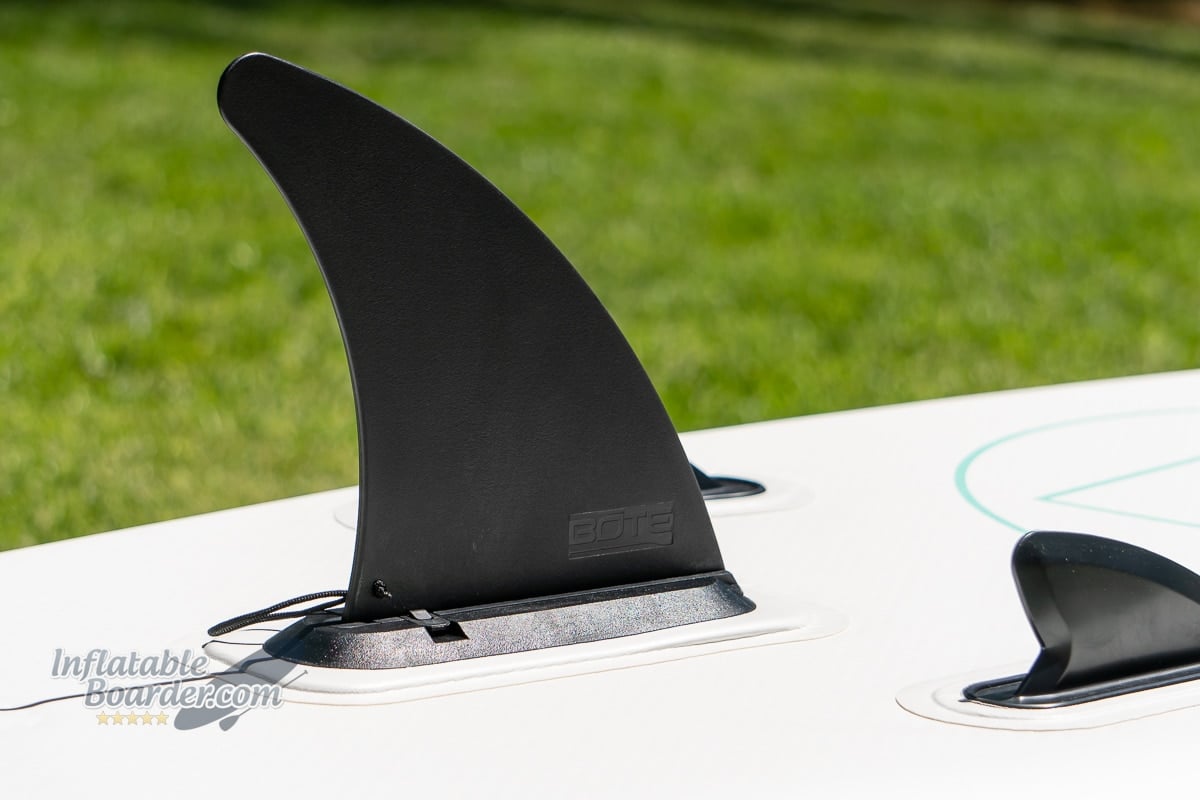
The Breeze Aero’s “surf” shape fin helps keep it more maneuverable on the water
The Breeze Aero has a single removable fin and two fixed fins. The fixed side fins are very small (about 1.5” deep and 4” long) and offer no real functionality for the board. When paddling without a center fin, these smaller fixed fins offer zero tracking assistance. Because they are flexible, they also have a tendency to get bent out of shape while the board is rolled up or if left on the ground for long periods of time. These incredibly small fins are aesthetic only, and personally, I’d rather see them removed and the cost savings go toward including a leash with the Breeze Aero (and Bote’s other iSUPs).
The center fin is removable and uses a slide-in fin box. Slide-in boxes are likewise subject to deformation from being rolled or other pressure – especially on the entry point of the fin box. If the fin box is rolled (make sure not to roll your fin box when packing your board) or the entry point is bent, it can become difficult-to-impossible to install your fin. I’d like to see all SUP manufacturers adopt the stand US fin box for its universality, but until that day happens the fin choice for slide-in fins is very limited. Bote offers only three styles of replacement/different fins for their slide-in fin box – none of which are the surf-style fin that comes with the Breeze, so a direct replacement from Bote for a lost fin is not available.
Warranty and Customer Support
Bote includes a 2 year warranty on all of their inflatable paddleboards, including the Breeze Aero. However, for this warranty to be in effect, you must register your board with Bote after your purchase. Accessories are warrantied for 90 days, and customers have a 30-day return period (though this is subject to a 20% restocking fee). Customers can contact Bote directly by online chat, website form, email, phone, and social media. Overall the Bote warranty is average for inflatable SUPs across the market.
Value
The Bote Breeze Aero presents an interesting question in assessing its value. The 10’8” version is so close in size, shape, and construction to the Wulf that it’s hard to see the value in the higher-priced Breeze. The Breeze does get a fiberglass paddle upgrade, but loses the leash. The paddle upgrade and cost difference also don’t align when you look at the cost and value of third-party paddle options. The 11’6” Breeze Aero, on the other hand, presents a better value proposition with more versatility and carrying capacity than the Wulf, plus the upgraded paddle. Along with Bote’s warranty and customer service, the Bote Breeze Aero 11’6” offers an average value at its current sale price.
Overall Impressions/Review Summary
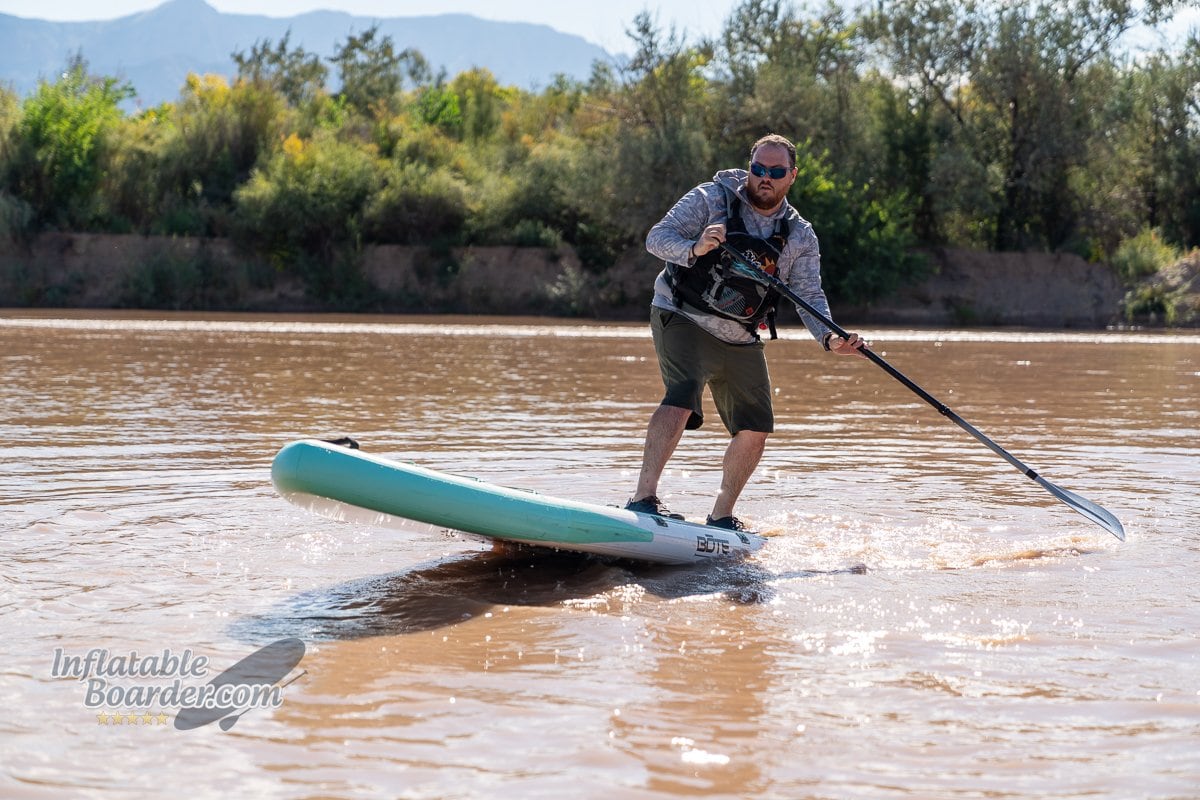
The Breeze Aero 11’6” is a good cruiser option for beginners.
The Bote Breeze Aero 11’6” is a large cruiser-style iSUP that’s a great option for beginner paddlers focused on leisure paddling. It’s not the fastest, it’s not the most versatile, but it does a great job of getting paddlers comfortable on the water. I’m a great example of that – the Breeze Aero is the board that I really learned to paddle on. The Breeze Aero also comes in several different, very vibrant, color schemes, a version with a built-in magnepod accessory holder, and a Full-Trax (full-length deck pad) version to match your specific needs.
Bote Breeze Aero iSUP FAQ
Is the Bote Breeze Aero a good fishing paddleboard?
While you can fish from the Bote Breeze Aero, Bote’s other iSUPs like the HD, Rackham, and even the Flood, are better suited to fishing with their inclusion of fishing-specific designs and features.
Is the Bote Breeze Aero heavy?
Not at all! The Breeze Aero is very light at just 22 lbs. The comfortable padded carry handles on the nose, center, and tail make it easy to carry by yourself or with a partner, and the side d-rings are compatible with the Bote Travel Link shoulder strap.
Can I take my kids or dog on the Bote Breeze Aero?
Yes you can. The Bote Breeze Aero has a maximum capacity of 315 lbs and the wide nose and tail give a stable feel for your passenger as well as yourself.
Is the Bote Breeze Aero Durable?
Yes. The Bote Breeze Aero is made with a durable PVC material and two PVC rail bands. I personally have seen the durability of these paddleboards in action through their use as commercial rental boards and I’ve even taken them down some Class II whitewater.
How long does it take to inflate the Bote Breeze Aero?
The Bote Breeze Aero takes about 8-10 minutes to inflate with the included hand pump. We do recommend getting an electric pump with any inflatable SUP as it makes the job easy and hands free.



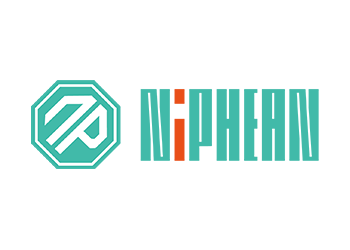



Leave a Reply